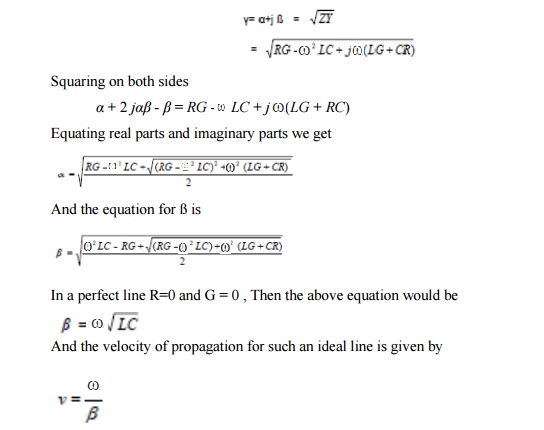Chapter: Transmission Lines and Waveguides : Transmission Line Theory
Wavelength, Velocity of Propagation
WAVELENGTH, VELOCITY OF PROPAGATION
Wave propagation is any of the ways in which waves travel. With respect to the direction of the oscillation relative to the propagation direction, we can distinguish between longitudinal wave and transverse waves. For electromagnetic waves, propagation may occur in a vacuum as well as in a material medium. Other wave types cannot propagate through a vacuum and need a transmission medium to exist.
Wavelength
The distance the wave travels along the line while the phase angle is changed through 2Π radians is called wavelength. λ =2п/ ß
The change of 2п in phase angle represents one cycle in time and occurs in a distance of one wavelength, λ= v/f
VeIocity
V= f λ
V=ω/ ß
This is the velocity of propagation along the line based on the observation of the change in the phase angle along the line. It is measured in miles/second if ß is in radians per meter.
We know that
Z = R + j ωL
Y= G+j ωC
Then

Thus the above equation showing that the line parameter values fix the velocity of propagation.
Related Topics